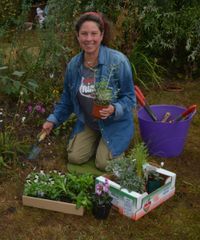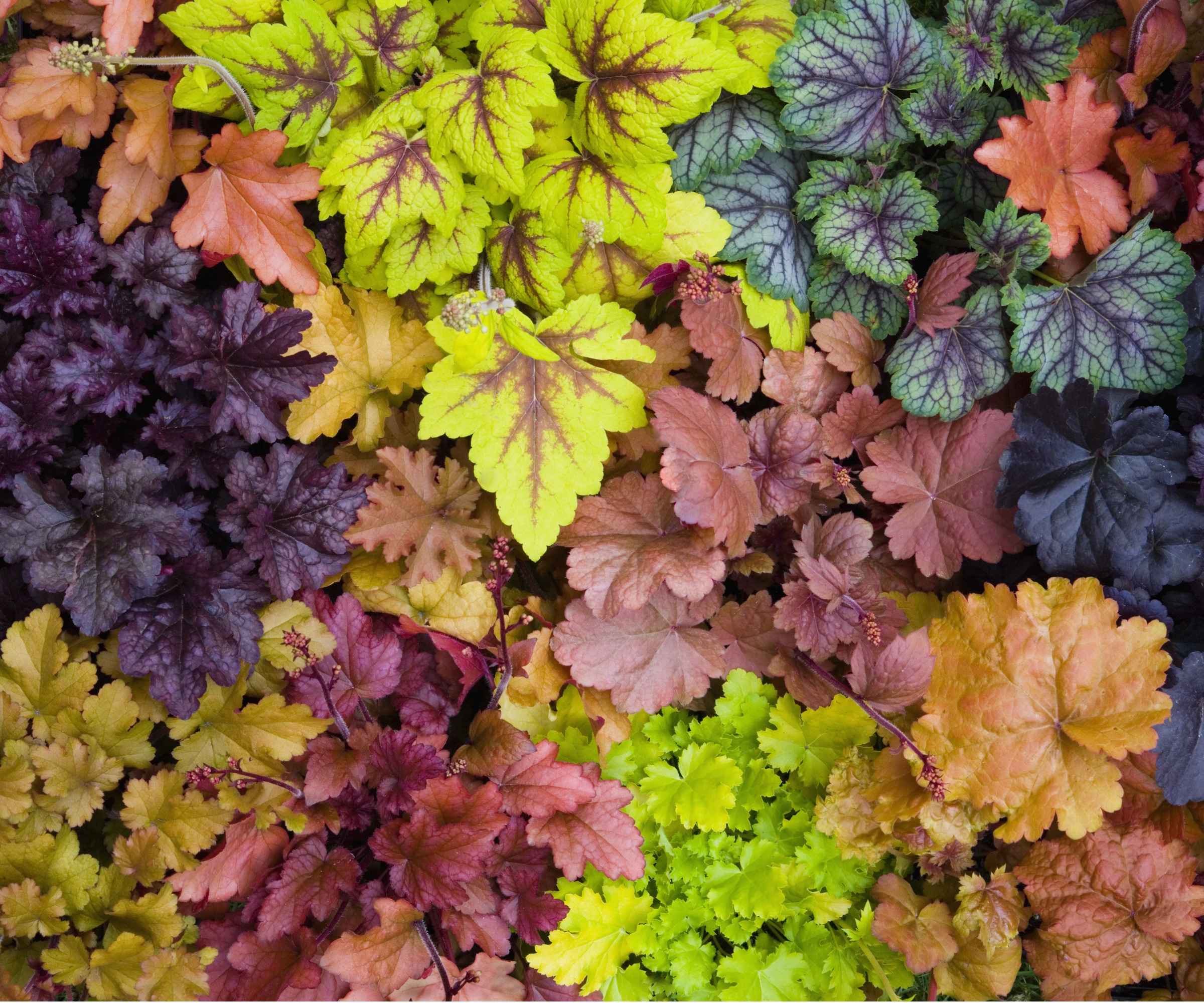Best plants for winter hanging baskets – 10 picks for long-lasting, joyful flowers
These winter bloomers will add uplifting color to your baskets through the colder seasons


Winter hanging baskets are a brilliant way of brightening the backyard when warm weather plants have finished for the year.
As an added bonus, because they are raised up they can draw the eye away from the rest of the garden, which might be looking a little threadbare after the glories of summer.
Our selection of plants are also all suitable for winter containers, so if you avoid the most common hanging basket mistakes, they will be sure to brighten your backyard through the colder months. There are plenty of colorful and textural plants to choose from, from traditional basket favorites to more quirky choices. Here we pick 10 of our favorites for long-lasting color.
1. Pansies and violas

Resilient, long-lasting pansies and violas come in a myriad shades and add brilliant pops of color to your hanging basket
Pansies and violas are hardy favorites that come in a variety of colors and will provide a cheerful display even in cold weather.
I prefer violas to pansies because they are smaller, so you can fit more into your basket. Their smaller petals are also less likely to take a battering from the worst winter weather.
2. Cyclamen

Mound-forming cyclamen are extremely cold-tolerant and perfect for basket planting
Known for their frost resistance, hardy cyclamen types offer beautiful and interesting blooms in shades of pink, red, and white.
Cyclamen hederifolium also have interesting markings on their leaves, which continue to provide interest once the blooms have faded.
Design expertise in your inbox – from inspiring decorating ideas and beautiful celebrity homes to practical gardening advice and shopping round-ups.
3. Gaultheria

Gaultheria procumbens brings white flowers, scarlet berries and aromatic foliage to the hanging basket party
Also known as checkerberry, this ground-hugging evergreen plant works well in baskets and can then be transferred to a shady area of the yard to provide groundcover.
It has small white flowers followed by scarlet berries and its aromatic, tough leaves turn red, adding vibrancy to the winter garden.
4. Primulas

Primroses and polyanthus are members of the primula family and add a brilliant splash of color to winter baskets
Primula is the umbrella term for the floral family that includes primroses and polyanthus.
These are long-flowering and reliable and come in a wide range of shades, from yellow and orange through to purple and blue.
Did you also know that the word 'primrose' comes from the Latin word 'primus', meaning first - so traditionally, it was literally seen as the first flower of spring.
5. Heather

The heather variety Erica carnea is more tolerant of neutral soils than other heathers, making it perfect for winter hanging baskets
Although most heathers prefer acidic soils, Erica carnea will thrive in more neutral growing media, which makes it ideal for cold-weather hanging baskets.
This winter heather is a low-growing plant with attractive pink flowers that provide essential nectar for the first pollinators to emerge in early spring.
We have a large mound of Erica carnea growing in our chalky soil, and from February onwards it is alive with queen bumblebees making their first foraging expeditions of the new year. It also provides a snug hibernation zone for overwintering ladybugs.
6. Dwarf spring bulbs

Dwarf daffodils such as 'Tete a Tete' add bright pops of color in spring and prolong the life of your basket
I love to scatter a few dwarf and miniature bulbs through my winter hanging baskets.
Muscari (grape hyacinths), Iris reticulata and little 'Tete a Tete' daffodils and 'Red Riding Hood' tulips emerge through the other plants in spring and are a wonderful way of prolonging the life of your basket.
7. Trailing ivy

Trailing ivies add texture and a pleasing contrast to the bright blooms of a hanging basket
Trailing ivies, especially variegated varieties, provide a neat contrast to the colorful flowers in your basket.
They draw the eye downwards, and can create a lot of natural movements in a winter hanging basket. Ivies also help disguise the underside of the basket as they cascade down.
8. Hellebores

Hellebores are a glad sight in spring and look wonderful in a hanging basket
One of my favorite plants of winter and early spring, hellebores - which are also known as Christmas or Lenten roses, are a feast for the eyes.
There are many hellebore varieties and they come in a myriad shades, from the deepest burgundy to purest white, and many cultivars are double-bloomed.
They are also one of the most snow-resilient plants and are easy to propagate, so once you have them in your garden, you may have them forever.
9. Heuchera

Heucheras come in many shades and their stunning foliage lights up the winter garden
Heuchera, also known as coral bells, and heucherellas bring fabulous year-round color to the backyard and are perfect additions to winter baskets - especially ones that are in the shade.
Their distinctive lobed foliage comes in a dramatic range of colors, from acid green through vibrant orange to a purple so dark it's almost black. Their delicate bell-shaped flowers are held high on thin arching stems.
10. Ornamental cabbage

Ornamental cabbages have dramatically-colored leaves that grow more colorful as the temperature drops
We don’t automatically think of brassicas when planning our ornamental hanging containers and borders, but in fact they can be interesting additions.
The leaves of ornamental cabbages, which are also known as flowering kale, create bright rosettes that can be white or shades of pink. They are smaller than their edible counterparts and as the temperature drops, their color intensifies, making them one of the most eye-catching fall and winter evergreens.
FAQs
What type of hanging basket should I use?
There are two main types of basket. The first is 'top-loaders', which are usually solid and made from wicker or plastic and only take plants at the top. These ones by La Jolie Muse, available from Amazon, would look attractive in a winter setting.
The other type has a wire frame that you line with a porous liner. These give you the scope to cut holes in the liner to add trailing plants at different heights. I like this triple pack of coco-lined metal baskets from Amazon, which give you loads of planting versatility.
What potting soil should I use?
Winter basket plants have the same requirements as summer varieties, so use either peat-free multipurpose potting soil with an added granular fertilizer to feed your plants through winter, or buy a specific container compost that has fertilizer already added, such as Miracle-Gro Potting Mix, available from Amazon.
How do I care for my winter hanging baskets?
The potting soil you use should have enough nutrients to feed your plants for 4-6 weeks, but after that they will need dosing with a liquid tomato fertilizer such as Farmers Secret Tomato Booster, which you can find on Amazon, once a fortnight.
Although we can usually expect more rain in winter, there may also be dry spells, so if the compost feels dry to the touch, add some water - but not too much.
Remember to deadhead your plants when flowers fade, as this keeps them neat and encourages more buds. Look out for pests too, though hopefully there will be fewer around int he cold winter weather.
What should I do with my hanging baskets in bad weather?
Most winter-flowering plants are hardy enough to withstand the cold, but if you live in one of the colder US hardiness zones that gets excessively low temperatures you may need to move your basket to a greenhouse or porch when the weather is at its worse.
The risk of fierce winter storms is also increasing, and if one is forecast it is best to move your basket to somewhere sheltered to prevent it being damaged or causing damage or injury in very high winds.
Stand the basket on an upturned bucket so trailing plants are not damaged.
Winter hanging baskets are a quick and easy way to add interest to the backyard during the colder months. As an added bonus, many of the varieties we have chosen are perennials so you can transplant them into beds and borders when the time comes to recycle your basket for a summer display.

Ruth is a Contributing Editor for Homes & Gardens, and formerly Gardening Editor of Amateur Gardening magazine. She is horticulturally trained, with a qualification from the Royal Horticultural Society. Her work for Amateur Gardening, the world's oldest weekly gardening publication, involved matching gardening tasks with each season, covering everything from sowing and planting, to pruning, taking cuttings, dealing with pests and diseases and keeping houseplants healthy. She is an expert in ornamental plants and edible crops, and everything she writes about and photographs is in her own garden, that has been a work in progress since her family moved there in 2012.